Over 60% of the energy from numerous primary sources globally is ultimately released into the atmosphere as heat. The effective recapture and reuse of this wasted thermal energy could significantly mitigate the greenhouse effect and contribute to achieving carbon neutrality goals. In this context, thermoelectric materials—innovative and environmentally friendly energy conversion materials—have emerged as particularly valuable. These materials can directly transform various forms of thermal energy into electricity and utilize the temperature differences generated by electric currents to manufacture precise temperature control or refrigeration equipment.
In power generation, thermoelectric materials offer stable electricity in extreme conditions, such as those used in NASA’s Curiosity rover (Radioisotope Thermoelectric Generator – RTG). This application underscores the considerable stability, reliability, absence of moving parts, and independence from weather conditions of thermoelectric devices. In the realm of refrigeration technology, thermoelectric materials provide swift temperature adjustment solutions for consumer electronics, such as chip cooling, boasting liquid-free, noiseless, and maintenance-free advantages. In summary, efficient and eco-friendly thermoelectric materials open new avenues for diverse and tiered energy use.
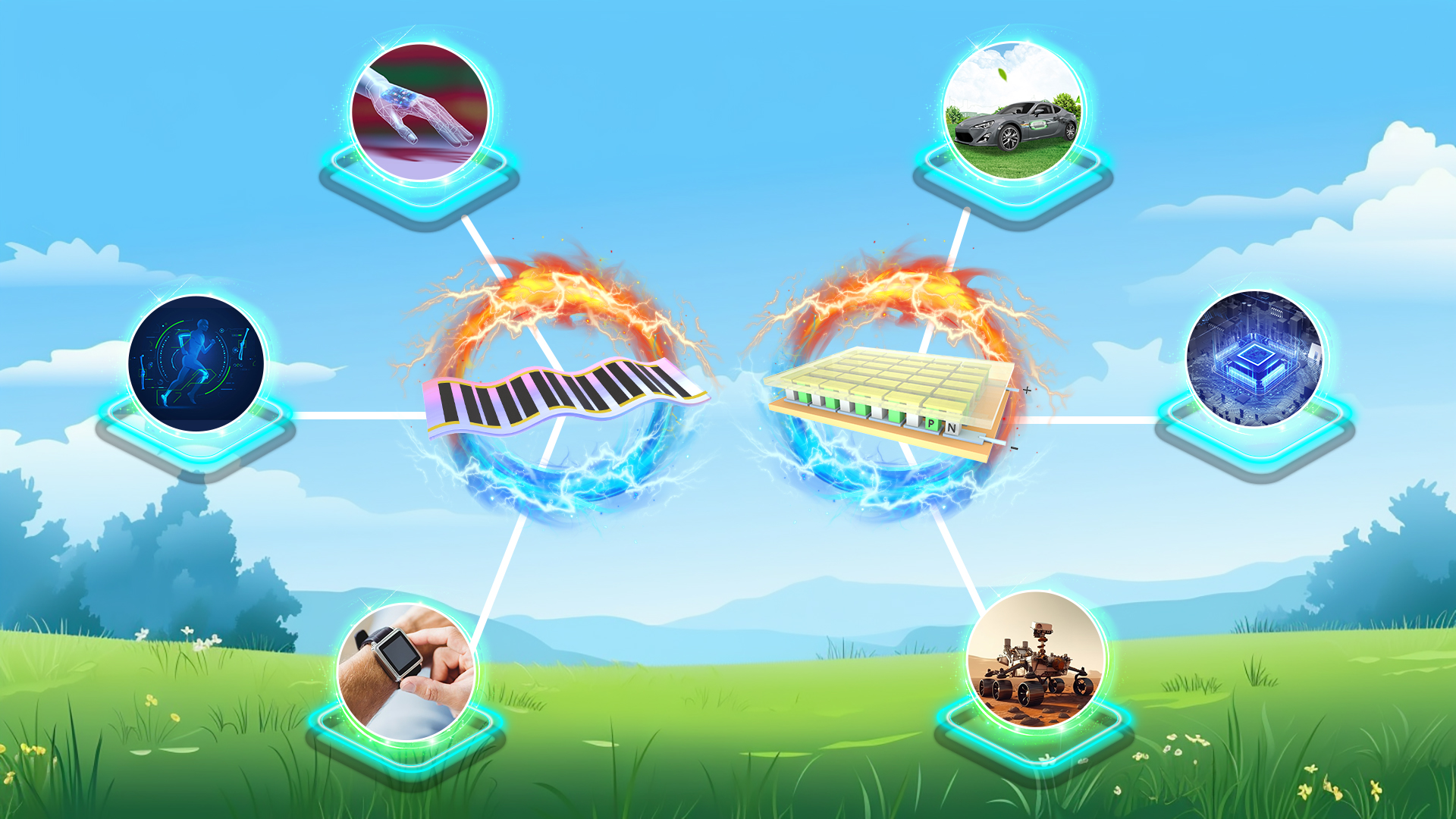
A research team led by Chair Professor Jiaqing He from the Department of Physics at the Southern University of Science and Technology (SUSTech) has made a series of important research advances in the field of thermoelectric energy conversion. In collaboration with partners, they have published three research articles and one review article in the academic journal Joule, which specializes in the energy field.
Advances in flexible thermoelectric materials
Current commercial thermoelectric materials are primarily bulk in nature, characterized by their hardness, large volume, and difficulty shaping them to fit the surfaces of heat sources. These constraints limit their application in the capture of low-grade waste heat from everyday environments, thereby hindering the advancement of sustainable development goals. In contrast, flexible thermoelectric materials have become widely adopted in self-powered electronic devices and heat collectors due to their capability to adapt to curved or non-flat thermal fluxes and maintain a balance between thermoelectric efficiency, flexibility, and scalability.
To address these challenges, Jiaqing He’s team has developed a Bi0.4Sb1.6Te3 thin film featuring a high-density twin structure. This unique structure allows for the synergistic modulation of carrier concentration, Seebeck coefficient, mobility, and local stress propagation, simultaneously achieving superior thermoelectric performance and flexibility. At room temperature, this film boasts a power factor of up to 45 μW/cm K2 and a zT value of 1.4. Remarkably, after enduring 1000 bending cycles, its electrical performance diminishes by less than 10%, underscoring its exceptional flexibility and durability. Furthermore, the film offers advantages in terms of low-cost, large-scale (>100cm2) production. When employed in planar flexible thermoelectric generators, this film can deliver an impressive output power density of up to 69 W/m2 at a temperature differential of 56.8K.
This breakthrough in flexible thermoelectric material not only provides a framework for understanding the relationship between the structure and properties of inorganic thermoelectric films, but also paves the way for innovative developments in wearable electronic devices and sustainable heat collection systems.
Their findings, entitled “Scalable and sustainable manufacturing of twin boundary-enhanced flexible Bi0.4Sb1.6Te3 films with high thermoelectric performance”, have been published in Joule.
Ph.D. student Dasha Mao at SUSTech and joint Ph.D. student Yi Zhou at SUSTech and the National University of Singapore (NUS) served as the co-first authors of the paper. Professor Jiaqing He is the sole corresponding author.
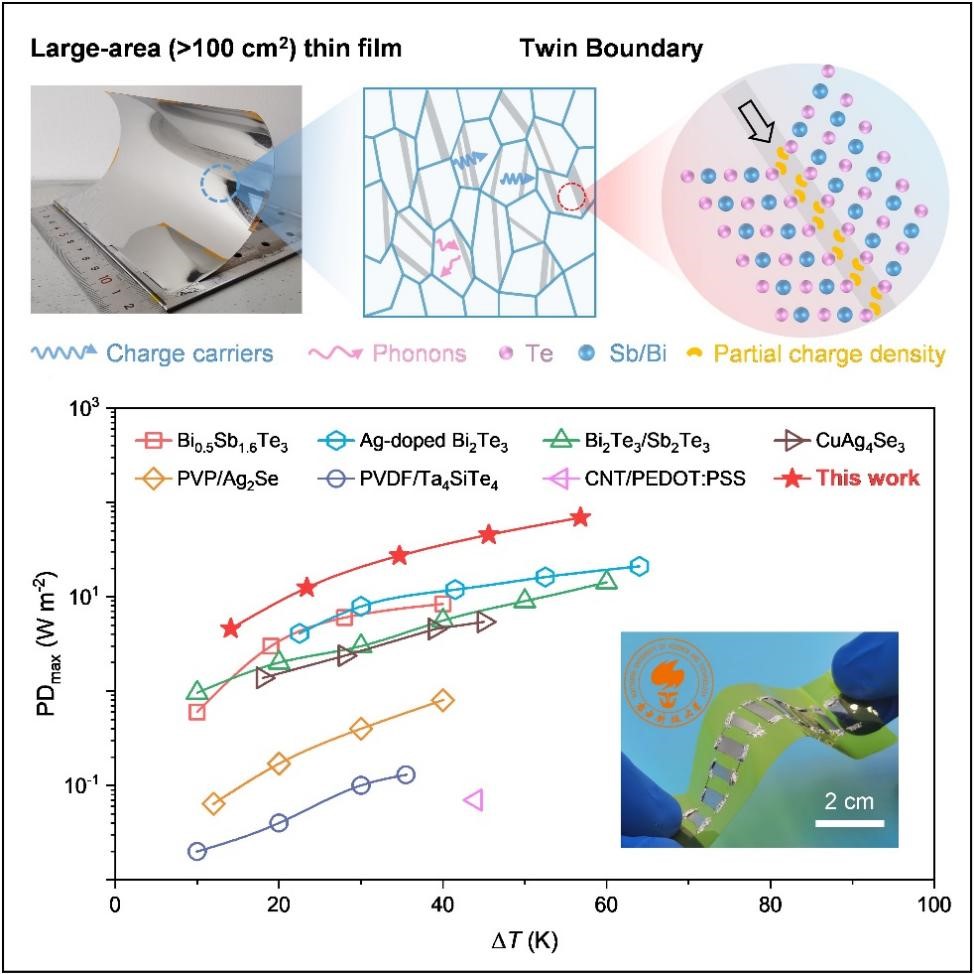
Figure 1. Twin engineering synergistically enhances the thermoelectric performance and flexibility of bismuth telluride-based thin film
Breakthroughs in ultra-low lattice thermal conductivity
In crystalline materials, achieving ultra-low lattice thermal conductivity (κL) relies not only on phonon transport but also significantly on non-propagating transport. This mechanism involves thermal and electrical transmission processes not dominated by conventional lattice vibrational modes such as phonons. Instead, they are governed by localized vibrational modes, including diffusion.
The team conducted extensive research into this phenomenon, discovering that the intensification of phonon localization is vital for attaining ultra-low κL. This insight paves new pathways for both understanding and harnessing non-propagating transport. Utilizing the vapor-liquid-solid reaction approach, they intricately designed and experimentally validated this concept in Mg3(Sb,Bi)2-based materials. These substances displayed an exceptionally low κL of merely 0.19 W/mK at room temperature, marking a 77% plunge from the full density value. This pronounced decrease is largely due to the amplified impact of phonon localization. Notably, naturally, localized high-frequency phonons possessing significant relaxation times are instrumental in phonon scattering, thereby playing an indispensable role at the intersection of propagating and non-propagating transport.
This investigation not only advances the theoretical comprehension of non-propagating transport but also fosters groundbreaking advancements in practical applications. Professor He’s team realized a zT value approaching 1.2 at ambient temperatures, establishing a benchmark, and attained the pinnacle average zT value of 1.6 across all n-type materials within the 300-573K temperature range. These outstanding outcomes underscore the efficacy of material engineering and strategic application in thermal transport by bolstering phonon localization to encourage electron-phonon decoupling.
This work, entitled “Achieving high thermoelectric performance through ultra-low lattice thermal conductivity based on phonon localization”, has been published in the Joule.
Visiting scholar at SUSTech, Hailong Yang, is the first author of the paper. Professor Jing Shuai at Sun Yat-sen University and Professor Jiaqing He are the co-corresponding authors.
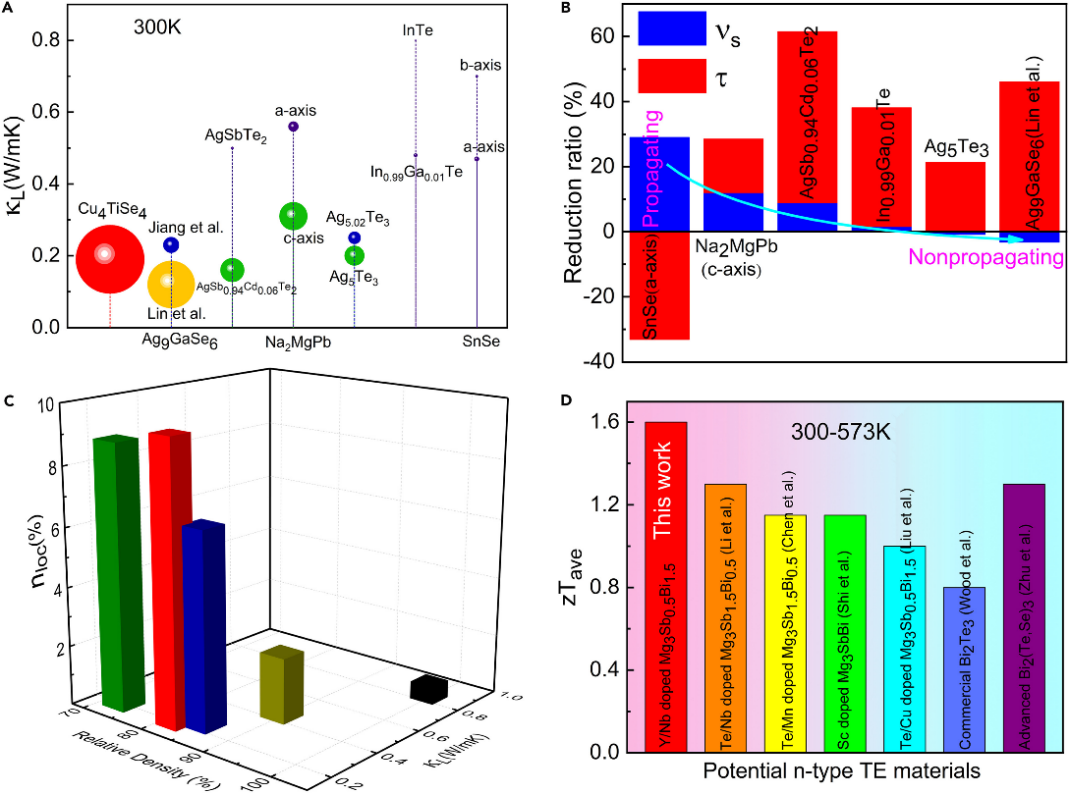
Figure 2. Analysis of phonon localization in Mg3(Sb,Bi)2 material with ultra-low lattice thermal conductivity
Harnessing thermoelectric potential in natural minerals
Compared to synthetic thermoelectric materials such as Bi2Te3, PbTe, SnSe, and filled skutterudites, natural minerals are usually not considered efficient thermoelectric materials due to their complex compositions and microstructures. However, the research by Professor He’s team and collaborators has revolutionized this traditional perception. They discovered a mixed natural mineral that exhibits good thermoelectric performance and possesses excellent electrical stability.
This natural mineral is centered around chalcocite, embedded with an insulating quartz network structure, accompanied by a small amount of bismuthinite and other associated minerals. After annealing optimization treatment, the unique composition of this natural mineral and its multi-scale insulating quartz structure can effectively decouple the transport of carriers, phonons, and ions. This characteristic enables the mineral to reach a peak zT of 1.4 at 973K, which not only possesses comparable thermoelectric performance to synthetic pure Cu2S material, but also demonstrates superior electrical stability.
The researchers conducted an in-depth analysis of how natural quartz enhances the electrical stability of chalcocite. They discovered that the network-like insulating barrier layer not only prevents the directed long-range migration of copper ions at high temperatures, but also acts as a natural varistor, adjusting the working voltage of each chalcocite unit.
This discovery provides new insights into improving the electrical stability of copper-based superionic conductor materials. Furthermore, they designed and prepared a variety of copper-based superionic conductor composite glass thin film thermoelectric materials. The preparation of these materials proves that the strategy of incorporating macroscopic insulating barrier layers can effectively improve the electrical stability of copper-based superionic conductor materials, offering new directions for the future development and application of thermoelectric materials.
These findings, entitled “Highly stabilized thermoelectric performance in natural minerals”, have been published in Joule.
Professor Zhenhua Ge at Kunming University of Science and Technology (KUST) serves as the first and corresponding author. Professor Jing Feng at KUST, Professor Jiaqing He, and Professor Lidong Zhao at Beihang University are the co-corresponding authors.
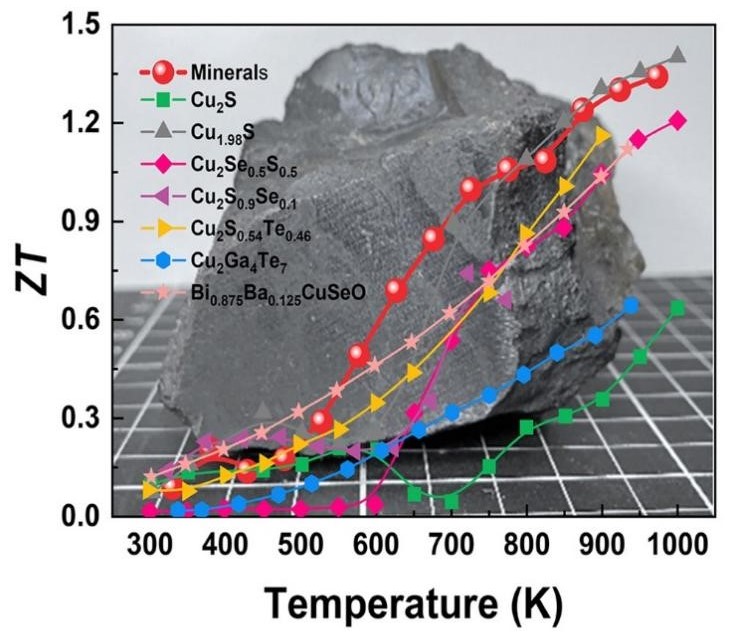
Figure 3. Natural minerals with excellent thermoelectric performance and stability
Innovations in high-entropy approaches in thermoelectric research
The entropy engineering approach is crucial for the advancement of thermoelectric materials. Utilizing this tactic, scholars have successfully created diverse high-entropy materials boasting exceptional thermoelectric qualities. Notably, Professor He’s group has made notable strides in recent years, devising a spectrum of high-efficiency, high-entropy thermoelectric material systems (Science, 371, 830-834, 2021; Science 377, 208–213, 2022). These works furnish profound perspectives on further investigation into entropy engineering methodologies.
Drawing from this research, they have delineated the principles for stabilizing thermoelectric materials through entropy and probed deeper into how high entropy influences charge transit and thermal energy conveyance. They emphasized that the four pivotal impacts of the high entropy approach—namely, the high entropy effect, lattice distortion effect, sluggish diffusion, and “cocktail” effect—are well-aligned with the fundamental criteria for superior thermoelectric materials. Furthermore, the team offered a comprehensive review of the progression in various high-entropy thermoelectric material frameworks, spanning IV-VI compounds, half-Heusler compounds, liquid-like substances, and oxide-based ceramics.
In conclusion, they summarized the exploration of high-entropy thermoelectric materials and anticipated their forthcoming potential. Presently, the realm of high-entropy thermoelectric materials is still nascent, offering vast opportunities for discovery. Mastering and enhancing these material mechanisms could pave the way for high-entropy thermoelectric materials to emerge as a cornerstone strategy in future thermoelectric endeavors.
This review paper, entitled “High-entropy thermoelectric materials”, has been published in Joule.
Visiting student at SUSTech, Qiqi Tang, is the first author of the paper. Professor Binbin Jiang at the University of Electronic Science and Technology and Professor Jiaqing He serve as the co-corresponding authors.
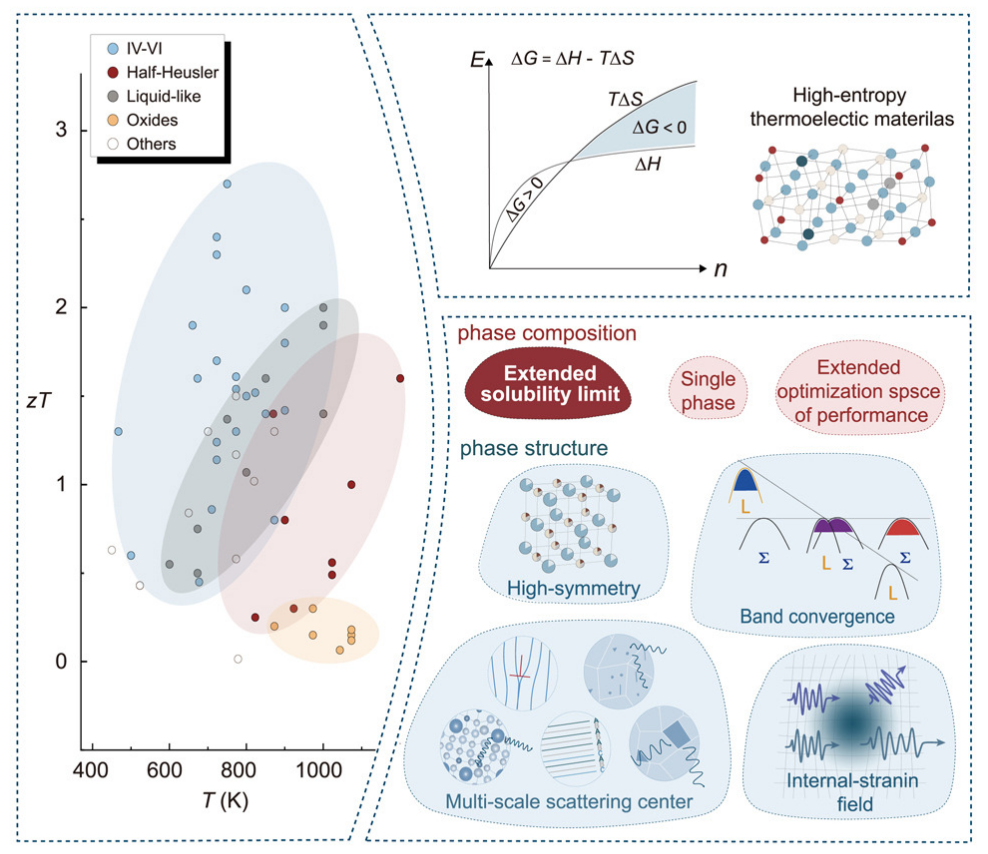
Figure 4. Design of entropy-stabilized thermoelectric materials and the impact of high entropy on electrical and thermal transport properties
Paper links in Joule (In order of appearance above):
https://doi.org/10.1016/j.joule.2024.08.009
https://doi.org/10.1016/j.joule.2024.06.020
https://doi.org/10.1016/j.joule.2023.11.013
https://doi.org/10.1016/j.joule.2024.04.012
To read all stories about SUSTech science, subscribe to the monthly SUSTech Newsletter.
Proofread ByAdrian Cremin, Yingying XIA
Photo ByDepartment of Physics